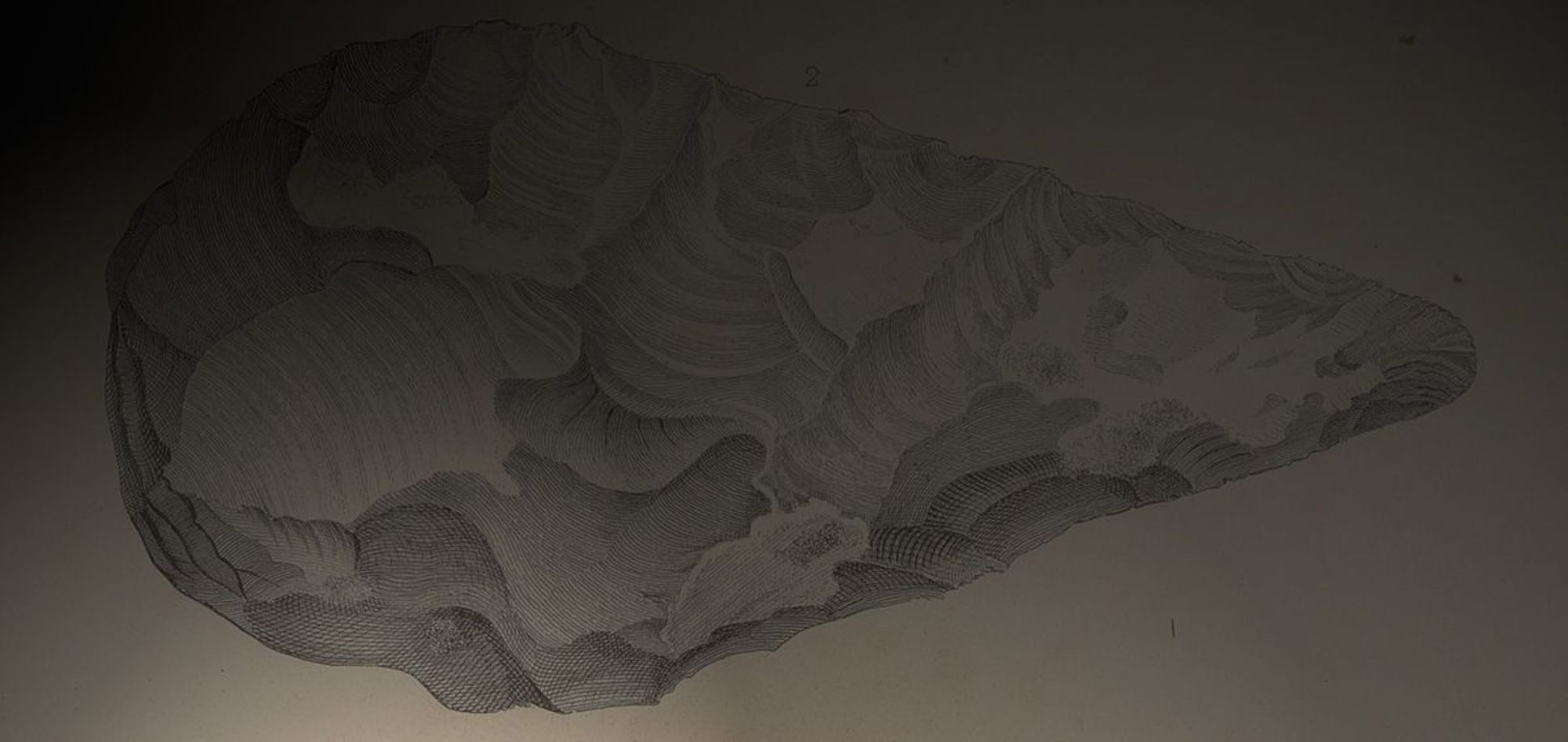
- Home
- Focus
- The birth of prehistory
During the 18th century, developments in the natural sciences dramatically transformed our knowledge. They presented us with a history of dynamic life and delved back into depths of time hitherto unknown. It was thanks to this new naturalist perspective that archaeologists were now able to write the story of prehistory, before humankind.
The discovery of prehistory
The archaeological system consisting of the three ages of humankind (stone, bronze and iron), spread from 1836 by Danish antiquarian Christian Jürgensen Thomsen, did not answer questions about high antiquity. In the mid-19th century, the principles and methods of stratigraphic palaeontology applied by researchers such as Boucher de Perthes in the fluvial terraces of the Somme allowed the development of new certainties based on man’s contemporaneous existence with certain animal fossils.
Prehistoric practice
From the 1850s and 1860s, information about discoveries relating to prehistoric archaeology was widely disseminated, provoking much scientific and philosophical debate and arousing the public’s curiosity. Hundreds of archaeological excavations began and many collections were formed.
With the work largely carried out by provincial archaeologists and scholars, this science developed only on the margins of academia. There were no regulatory constraints, with anyone able to search and dispose freely of their finds (for example, through sale, exchange or donations). Only the creation of the musée gallo-romain and of some local museums allowed for the formation of public collections.


